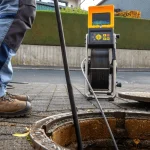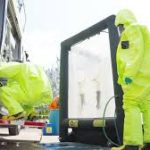Unmasking the Silent Chemical Pollution to Waterways
Australia is home to some of the world’s most unique aquatic ecosystems, many of which are vulnerable to the issue of chemical pollution, and as concern over the health of our rivers, lakes, and estuaries grows, understanding the sources and impacts of chemical pollutants becomes increasingly important. In regional communities, the effects can be more concentrated due to the proximity of agricultural and industrial activities. This article explores how chemical pollution poses a threat to waterways in Australia, and what steps can be taken for effective environmental protection.
Understanding Chemical Pollution
Chemical pollution refers to the introduction of harmful chemical substances into the environment. These substances may come from a variety of sources including pesticides, industrial by-products, household chemicals, and pharmaceutical waste. When it comes to aquatic systems, even low concentrations of these chemicals can have significant and long-lasting effects.
Chemical contaminants can degrade water quality, harm aquatic life, and accumulate in fish and other organisms, ultimately affecting human health, and while some pollution is the result of large-scale industrial spills, much of the chemical pollution in Australian waterways comes from diffuse sources that are less visible but equally damaging.
Agricultural Sources of Chemical Pollution
Agriculture plays a central role in both the economy and landscape of rural Australia. However, farming activities are a major contributor to chemical pollution, particularly through the use of fertilisers, pesticides, and herbicides. These chemicals can be washed into rivers and streams during rainfall, which is a process known as agricultural runoff. This runoff introduces nitrogen and phosphorus into waterways, leading to algal blooms that deplete oxygen levels and harm aquatic life.
The environmental impact of these chemicals is not confined to immediate surroundings, as they can travel long distances through river systems, affecting ecosystems far downstream. This makes waterway protection a priority not only for individual farmers but also for entire regions.
Industrial and Urban Contributions
While agriculture is a key source of chemical pollution in rural areas, industrial and urban environments also contribute significantly to the problem. Factories, manufacturing facilities, and wastewater treatment plants can release a variety of harmful substances, including heavy metals, solvents, and petrochemicals, into nearby water systems.
Urban stormwater runoff is another concern, particularly in areas with surfaces like bitumen and concrete. When it rains, water collects on top of these surfaces and transports pollutants such as motor oil, brake dust, and household chemicals into local creeks and rivers. Unlike point-source pollution, which comes from a single identifiable source, these urban pollutants are diffuse and harder to manage.
The environmental impact of industrial pollution is often more acute near the discharge points but it can also affect wider regions if not adequately monitored and managed. Local councils and waste management companies like Clarence Valley Septics must work in collaboration to minimise these risks and promote long-term protection strategies.
The Regional Impact: A Closer Look
Like many rural Australian areas, the Clarence Valley is impacted by both agricultural and industrial activities. For example, in areas with significant dairy and cattle farming, effluent runoff can introduce nutrients, pathogens, and residues from veterinary pharmaceuticals into water systems.
Furthermore, small-scale industries and septic systems, if improperly managed, can become unintentional sources of chemical pollution. Septic tank overflows, for example, may release household chemicals and waste into the environment, contaminating both surface and groundwater.
This underlines the need for local solutions that involve community participation and business accountability.
Waterway Protection Through Community and Industry Collaboration
Effective waterway protection requires a multi-faceted approach that includes education, regulation, and innovation. Community awareness is essential, and individuals should understand how their everyday actions, such as the use of garden chemicals or car washing, contribute to broader chemical pollution issues.
Industry must also play a proactive role. Businesses involved in agriculture, manufacturing, and waste disposal should implement best practices for chemical handling and storage, invest in spill prevention systems, and regularly monitor discharges. Waste management providers like Clarence Valley Septics are central to these efforts, offering services that ensure safe chemical waste disposal and reduce the risk of accidental contamination.
Government policies and incentives can further encourage the adoption of sustainable practices. Programs that support farmers in reducing chemical use or transitioning to organic methods can significantly lower the volume of pollutants entering waterways.
Unmasking the Chemical Threat to Waterways
The threat of chemical pollution is not easily seen, but its effects on Australia’s waterways are real and growing. From fertilisers in rural paddocks to petrochemicals in urban gutters, these pollutants challenge the resilience of aquatic ecosystems across the country, and by understanding the environmental impact and sources of pollution, we can begin to implement practical and cooperative solutions.
Preserving water quality is not only an environmental issue, it is also a public health and economic imperative, as the wellbeing of communities, industries, and ecosystems is deeply intertwined with the health of our waterways.
Clarence Valley Septics is committed to supporting communities and businesses in reducing chemical pollution through responsible waste management. If you manage chemical waste disposal at your business or want advice on improving your waste handling practices, contact our team today on +61 2 6645 3100 or via our website. Together, we can take meaningful steps toward cleaner, safer waterways for future generations.


